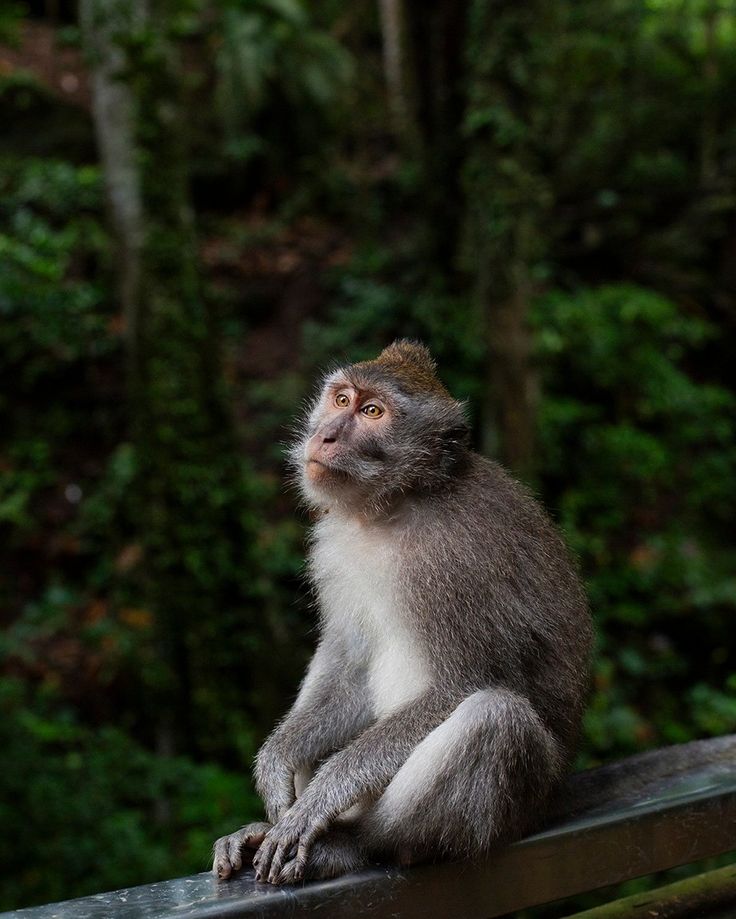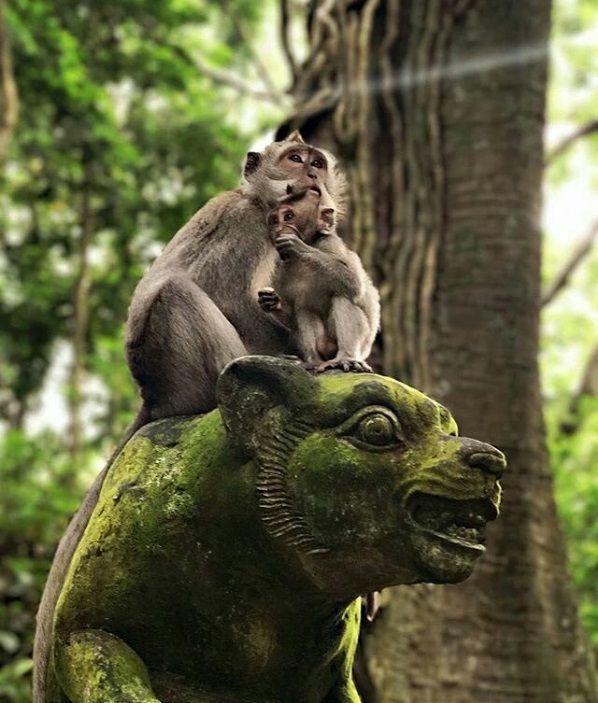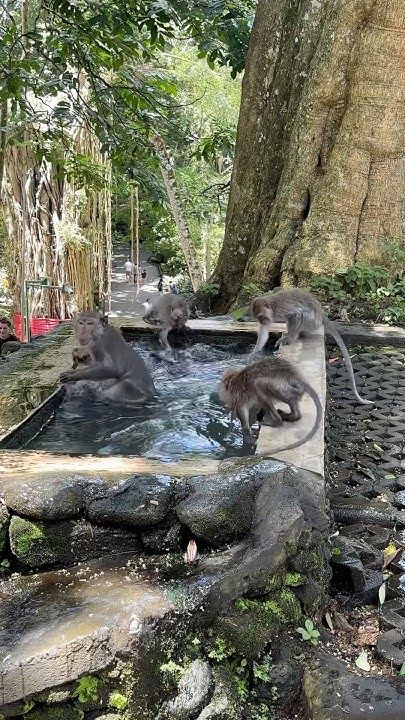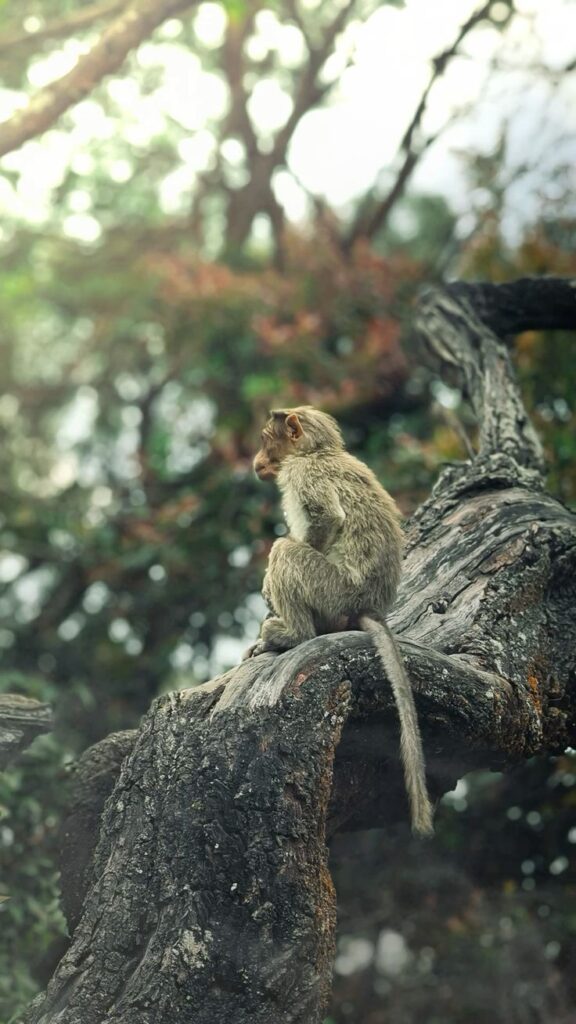
High above the forest floor, where the sunlight flickers through a mosaic of leaves, lies one of the most vibrant and dynamic ecosystems on Earth — the forest canopy. This upper world of trees, vines, and epiphytes is home to a thriving community of animals. Among its most charismatic and influential residents are monkeys. Agile, intelligent, and endlessly adaptable, these primates have become masters of the treetop realm. Welcome to the secrets of the canopy, where monkeys rule the forest skies.


The Vertical World: A Canopy Overview
The forest canopy is the dense, leafy roof formed by the crowns of tall trees. In tropical and subtropical forests, this layer is often 20 to 40 meters above the ground, and in some cases even higher. The canopy is rich in biodiversity and resources — it’s where light is most abundant, fruits flourish, and flowers bloom. For monkeys, it offers everything they need: food, shelter, social networks, and relative safety from terrestrial predators.
But life in the canopy isn’t simple. It’s a three-dimensional maze of constantly shifting branches and seasonal food supplies. To thrive here, monkeys have developed an array of adaptations and behaviors that make them true aerial acrobats.


Masters of Movement: Evolution of Arboreal Agility
Monkeys that live in the canopy have evolved remarkable physical traits. Prehensile tails, long limbs, strong grip, and flexible joints all enable them to navigate the complex structure of tree branches.
Species like spider monkeys and howler monkeys in Central and South America boast prehensile tails — often referred to as a “fifth limb” — that can support their entire body weight and help them reach otherwise inaccessible fruit or swing from branch to branch. In contrast, Old World monkeys like colobus monkeys rely more on powerful leaps and precise coordination between hands and feet.
Brachiation — the hand-over-hand swinging movement — is especially prominent among lesser apes like gibbons. These agile primates can soar through the canopy at speeds up to 55 kilometers per hour, covering distances of up to 15 meters in a single swing. Their acrobatics are not only efficient but also reduce the time spent exposed to predators or competitors.


Diet and Foraging: The Canopy Buffet
The canopy offers a rich and varied buffet for its primate inhabitants. Fruits, leaves, flowers, nectar, seeds, and even insects are all part of the monkey diet. But accessing these resources requires intelligence, memory, and strategic planning.
Many monkeys have highly developed spatial memory that allows them to remember the locations and fruiting cycles of trees. Capuchin monkeys, for instance, can track fruiting seasons and plan routes to maximize their foraging efficiency. Some monkeys are even known to use tools — like using sticks to extract insects or stones to crack nuts — though this behavior is more common on the forest floor or edge.
Canopy monkeys also play a vital ecological role as seed dispersers. After consuming fruit, they excrete seeds in new locations, helping to maintain forest diversity and regeneration. This makes them essential partners in the ongoing health and renewal of tropical ecosystems.


Life in the Trees: Social Structures of the Canopy
The high life isn’t lived alone. Most canopy monkeys are highly social, forming troops or groups that vary in size depending on the species. These groups provide protection, social stimulation, and reproductive opportunities.
In the forest skies, communication is key. Monkeys use a combination of vocal calls, facial expressions, body posture, and tactile contact to navigate their social world. Howler monkeys produce thunderous roars to define territory, while gibbons sing haunting duets to reinforce pair bonds and mark their range.
Social hierarchies are common, especially in species like macaques and capuchins. Higher-ranking individuals have better access to food and mates. Meanwhile, grooming serves as both a hygienic function and a form of social currency, used to cement alliances and ease tensions.
Despite the tight-knit nature of monkey groups, competition can be fierce. Battles over food trees, territory, and mates are common, and many species have developed intricate strategies for avoiding conflict or forming coalitions.


Raising the Next Generation
Parenting in the canopy is a delicate balancing act. Baby monkeys are vulnerable and completely dependent on their mothers for warmth, food, protection, and social learning. In many species, infants cling to their mother’s belly or ride on her back as she moves through the trees — a risky endeavor in a world of swinging branches and sudden drops.
Mother-infant bonds are incredibly strong, and learning begins early. Through observation and mimicry, young monkeys learn what to eat, who to trust, and how to move safely. In some species, other troop members help care for the young, a behavior known as alloparenting.
Reproduction and parenting strategies vary. Gibbons form monogamous pairs and raise offspring in small family groups, while other species like squirrel monkeys live in large troops with more fluid social arrangements.


Threats in the Treetops
Despite the canopy’s many advantages, it is not without danger. Raptors such as harpy eagles or crowned hawks pose a deadly threat, capable of snatching monkeys from the trees with silent precision. Snakes, especially tree-dwelling ones like the green tree python, are another constant danger.
To combat this, monkeys have evolved sophisticated alarm calls. Vervet monkeys, for example, have different vocalizations to distinguish between aerial and terrestrial threats, prompting specific evasive behaviors — diving into bushes for leopards, looking up for birds of prey.
Still, the most pressing threat to canopy monkeys today is human activity. Deforestation, logging, and agricultural expansion are destroying habitats at an alarming rate. In many regions, roads and developments fragment forests, isolating populations and making survival increasingly difficult.
The illegal pet trade and hunting add further pressure. Monkeys are often captured for sale as exotic pets or killed for bushmeat, particularly in parts of Africa and Southeast Asia.


Monkeys and the Forest Web
Monkeys are not isolated actors in the canopy — they are integral threads in the web of forest life. Their movements disperse seeds, pollinate flowers, and influence predator-prey dynamics. Their behavior also affects the distribution of other animals — for instance, birds often follow monkey troops to catch insects stirred up by their movement.
This interconnectivity makes them crucial to ecosystem health. In areas where monkey populations decline, changes in plant diversity, tree regeneration, and overall forest structure are often observed. The presence of healthy monkey populations can thus be seen as an indicator of forest vitality.


Understanding Canopy Intelligence
What truly sets monkeys apart is their intelligence. Canopy life demands quick thinking, adaptability, and memory. Monkeys have been observed using deception, forming political alliances, and exhibiting empathy — all traits once thought to be uniquely human.
For example, studies have shown that capuchin monkeys will offer help to others in exchange for future favors, a form of reciprocal altruism. Other species, like Japanese macaques, have developed local traditions, such as washing sweet potatoes or using hot springs — behaviors passed down through generations.
The canopy, it turns out, is not only a realm of action but also of thought and culture.


Protecting the Monarchs of the Canopy
If monkeys are the rulers of the forest skies, then their kingdom is under siege. Conservation efforts are essential to safeguard these intelligent beings and the ecosystems they support. Strategies include:
- Habitat protection through the creation and maintenance of national parks and reserves.
- Ecotourism and community involvement, which can provide sustainable income alternatives.
- Anti-poaching enforcement and wildlife trafficking laws.
- Research and education, to increase global awareness of monkeys’ ecological roles.
Organizations across the globe are working to preserve canopy habitats, from the Amazon to Borneo, ensuring that future generations can witness the magic of monkeys leaping through the treetops.


Conclusion: The Sky-Dwellers of the Forest
In the realm between the earth and the clouds, monkeys reign with grace, agility, and intelligence. Their lives, hidden high in the trees, are filled with complex social bonds, remarkable strategies, and evolutionary wonders. They are not just creatures of the wild — they are stewards of the forest canopy, its farmers, its navigators, and its guardians.
To protect the secrets of the canopy is to protect a living symphony of life — and at its heart, the monkey, swinging from branch to branch, ever alert, ever playful, ever vital.






